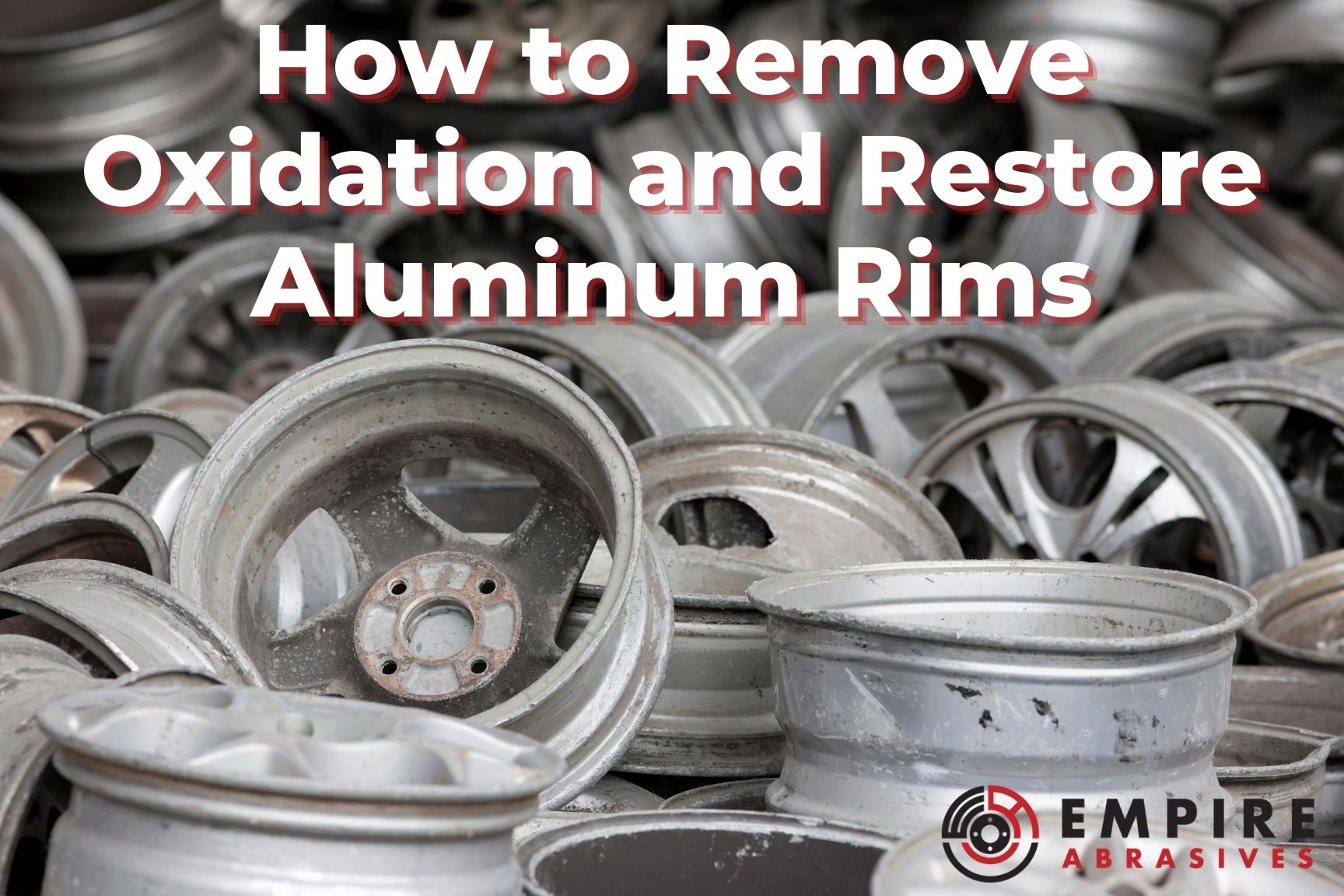Aluminum produces many common household products, including sidings, furniture, and cutlery. Although its shiny beauty and durability make it a popular metal, oxidation can cause it to become dull. To keep aluminum items glossy and appealing, proper maintenance is essential.
Even if it appears easy, you need to know the best cleaning solutions for aluminum that won’t harm it. In this article, we offer our expertise in cleaning aluminum to help you clean your belongings and restore their shine without causing any scratches. Continue reading!
What is Oxidation of Aluminum ?
The oxidation of aluminum results from the metal’s reaction and combination with airborne or moisture-borne oxygen. It’s a normal process brought on by the metal’s deterioration over time.
It’s critical to distinguish between corrosion and rust in this situation. One kind of corrosion that mostly affects iron and steel is rust, which happens when these materials get near moisture. Metals corroding is the result of a chemical reaction wearing them down. This is the result of aluminum oxidizing.
Aluminum oxidized to produce a white, chalky, powdery layer on the metal’s surface. Amazingly, this first oxidation shields the metal from further corrosion, contributing to a large portion of aluminum ‘s corrosion resistance.
How to Restore Shine to Various Oxidised Aluminum
-
How to Take Aluminum Cast Out of Oxidation
Cookware made of cast aluminum (pouring molten aluminum into a mold and allowing it to harden is called casting) comes in various forms.
Step 1: Clear Out Any Debris or Dirt
Clear off any debris that has gathered on your aluminum. For instance, to loosen food while cleaning a skillet, just add water to the pan and boil it for a little while. The surplus food in the pan can then be carefully removed using a wooden spatula or other similar implement.
Step 2: Try Vinegar or Acid Again
Some aluminum pans could be challenging for you to clean if you haven’t done it previously. Simply mix some acid with the hot pan water for a simple solution. You can use diced apples, tomato, lemon juice, lime juice, white vinegar, or even cream of tartar. After putting one of the aforementioned components in the water for around fifteen minutes, try removing the meal once more.
Step 3: Select High-Quality Steel Wool
Did the efforts above yield just modest progress? Remain optimistic, as to clean aluminum oxidation from cast aluminum can be challenging. The best way to remove the food with fine-grade steel wool is to use light, grain-following strokes.
Be cautious not to push too hard during this technique since it could cause scratches if you apply excessive power.
Step 4: Apply a Pad
It’s time to proceed to the following stage after removing the large food pieces. Two teaspoons of cream of tartar and four cups of water should be added to the pan. This mixture should be brought to a boil and left there for ten to fifteen minutes. Next, clean your cast iron aluminum with a gentle, non-abrasive pad.
Step 5: Drain and Let It Cool
When the liquid reaches a boiling point, remove as much of the cream of tartar and water solution as possible without getting your hands dirty. Next, gently scrape the pan in circular strokes using a non-abrasive cloth or pad (a toothbrush works too).
Step 6: Incorporate Lemon Juice
You can proceed to the last step once the pan appears clean. Combine one and a half cups of water with a half cup of lemon juice. White vinegar can also be used instead of lemon juice if you have any.
After dipping your clean sponge or cloth into the mixture, gently wipe the pan’s surface to get rid of the tartar solution. Another useful trick is to simply spritz the lemon and water combination onto the pan using a vacant spray bottle you may have lying around the home.
Finally, remove any remaining liquid from your pan with a dry, clean cloth.
-
How to Removing Hammered Aluminum Oxidation
Vintage or antique objects are frequently connected to hammered aluminum.
Step 1: Fill the Pot
Add 2 cups of water, four teaspoons of cream of tartar, and 1 cup acidic liquid (such as lemon juice or white vinegar) to your cooking pot.
On your burner, bring the mixture to a boil. Double this dish in a larger pot, according to the size of the object you’re cleaning.
Step 2: Locate an Open Washbasin and Close the Drain
Look for an accessible tub or washbasin where you can soak. After plugging it in, Pour the boiling water into the tub or washbasin.
Once you have hammered the aluminum object, place it in the bucket, sink or tub and let it rest for at least ten minutes. For best results, let your heavily blackened aluminum item soak further.
Step 3: Remove the Water
You may remove the water combination as soon as the object has soaked for long enough. Pour hot (not boiling) water in place of this liquid and stir in 1 tablespoon mild dish soap.
Let this liquid soak for a few more minutes for optimal cleaning results.
Step 4: Scrub Lightly
Remove the aluminum object soaking in water and use a non-abrasive cleaning pad after at least five minutes. Gently rub the object to get rid of any remaining darker areas.
Rinse the item to ensure no soapy residue remains after removing the black areas. Wipe the object fully and remove any excess moisture with a dry cloth.
Step 5: Give the Metal a Shine
Use an industrial metal polish to preserve the excellent condition of your hammered metal object and give it a long-lasting sheen.
-
How to Take Out Tarnished Aluminum ’s Oxidation
Dark, dull patches on tools, pots, pans, and other food preparation equipment are called tarnished aluminum.
First, you can use the same procedures to clean cast aluminum . If it doesn’t work, consider using the natural cleaning ingredient borax to make a solution.
Step 1: Prepare a Paste
To begin, combine a tiny amount of water with ¼ cup of Borax. To get the right consistency, add the water gradually. A paste that is neither too dry nor too moist to slide off is what you need.
Step 2: Cover the aluminum with Paste
Once the mixture reaches the proper consistency, carefully apply it with your brush to the tarnished parts of the aluminum . Give this mixture at least ten minutes to sit on the aluminum object. More stubborn stains could require up to an hour of soaking time to remove.
Step 3: Apply Paste Rubbing
Work the Borax solution into the aluminum item’s stains using the toothbrush. You’ll see that the tarnish starts to fade as you proceed. If any extra paste remains, wipe it off with a moist towel. Use a dry cloth to completely dry the item to complete the process.
-
How to Get Rid of Severe Oxidation on Aluminum
Don’t worry; you can still successfully remove heavy oxidation from your aluminum food processing equipment, even if it may happen over time.
Step1: Clear the Debris
Remove any large bits of collected dirt or debris using a brush or a cloth.
Step 2: Prepare the Cleaning Solution
The next step is to mix a quart of warm water with one spoonful of dishwashing soap. To begin cleaning, dip the pad, brush, or towel into this mixture. It is advisable to apply light pressure because applying too much pressure can result in injury.
Step 3: Give it a Rinse
Rinse your brush or cloth after thoroughly cleaning the surface to remove any soap combination.
Conclusion
In conclusion, you may bring back the shine and luster of your aluminum objects by learning about the many forms of aluminum oxidation and applying the proper cleaning techniques.
The above mentioned guide on polishing aluminum for more information on proper cleaning and maintenance techniques is all you need to know.
We can overcome obstacles and failures to create a better future, just as aluminum can be returned to its original state. In your cleaning process, consider the methods and supplies suggested to preserve the aluminum ’s aesthetic appeal and represent tenacity and determination.



































